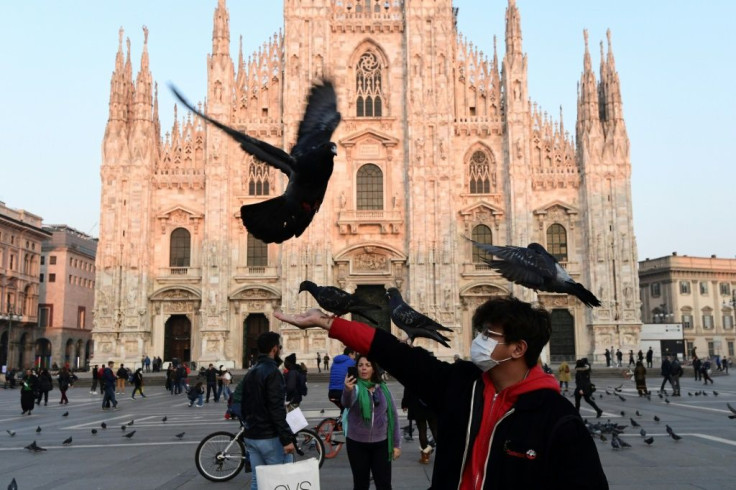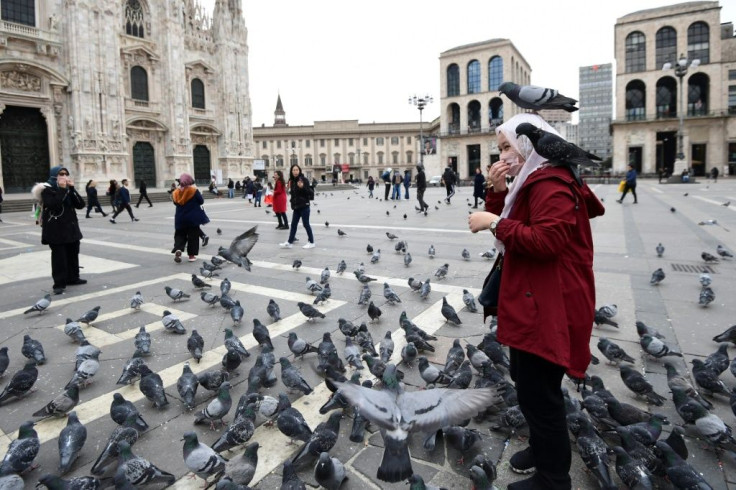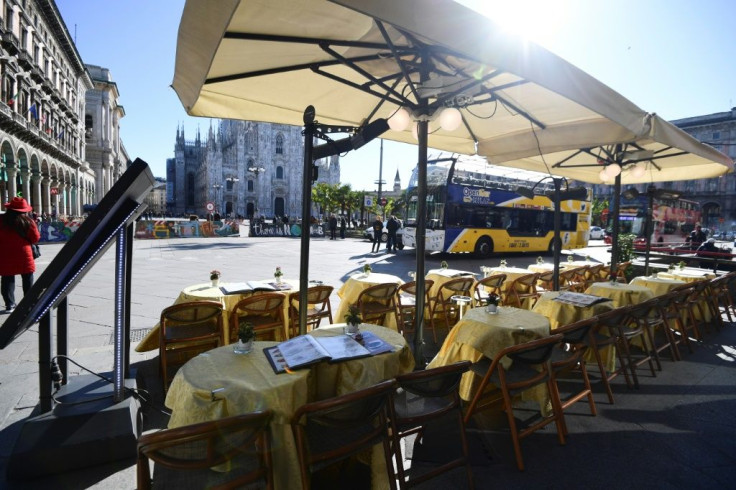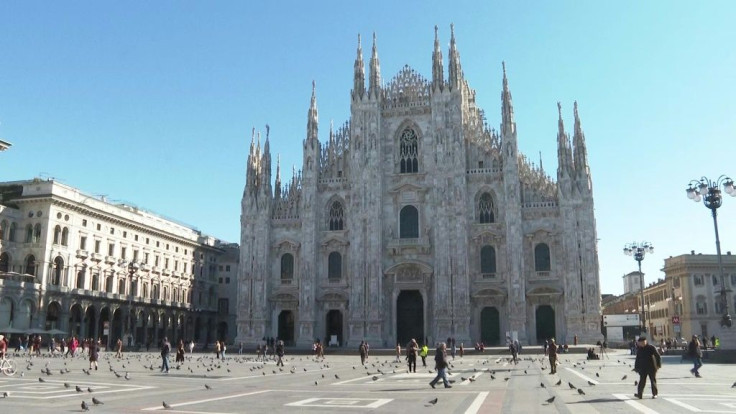Duomo Open, Italy's Milan Tries To Return To Life
Milan's lace-like Duomo cathedral swung open its gates to tourists Monday as Italy's financial capital tried to get back to work after landing in the heart of Europe's coronavirus outbreak.
Yet fears over COVID-19 still haunted a region where 24 of the 34 deaths have occurred in Europe's third largest economy since February 22.
Visitors were allowed into the Duomo -- along with the city's main museums -- only on a quota basis as authorities sought to stem overcrowding to lower the odds of the virus spreading.
There were few reasons for the extra precautions: the number of reporters who descended on Milan's most renown tourist site easily outnumbered the tourists and locals milling on its central square.

"There are very few people inside the Duomo," Japanese tourists Isamu Ohashi said after a 30-minute stroll across its famed marble floors.
"I could enjoy the Duomo with fewer people than normal. So personally, I was a little bit lucky," the 24-year-old said with a shy laugh.
"But this situation is very difficult for the government," Ohashi added in a graver tone.

Indeed it is.
Italy's main index on the Milan Stock Exchange a few short blocks off the main square was down three percent by mid-afternoon.
It extended a week of losses triggered by fears that measures aimed at stamping out the virus were also suffocating economic activity and disrupting global supply chains.

Italy's sluggish economy is now flirting with the possibility of recession caused by the emergence of the new viral strain that first appeared in China at the end of last year.
Economy Minister Roberto Gualtieri promised Sunday to inject 3.6 billion euros ($4.0 billion) into businesses most affected by the slowdown.
Japan's Ohashi offered eye-witness testimony of just how badly Italy's crucial tourism industry was being hit, saying both Milan and Venice were "empty".

Italy is now officially divided into three coronavirus zones.
One in Italy's north covers 11 municipalities and 50,000 people and has been placed under quarantine.
Milan's Lombardi province is in another, and also includes the oft-visited Veneto region of Venice and Bologna's Emilia-Romagna.
Schools and universities there will remain closed at least until the end of the week.
The surrounding ski resorts will stay open on the condition that the lifts are only operated at one-third capacity.
Major sporting and cultural events are being suspended and theatres, including Milan's grand La Scala opera house, remain closed.
Milan's nightclubs are also shuttered.
The third zone covers the rest of the country.
Restrictions in cities are set on a case-by-case basis, and have turned tourism into a hit-and-miss affair in hotspot cities.
Rome's Church of St Louis of the French -- home to paintings by the Baroque master Caravaggio -- closed Sunday because one of its priests tested positive after returning to France.
The government's approach has not been universally well-received.
One lay Catholic social service organisation criticised the number of churches that have been closed in Italy's north.
"Churches are being grouped together with cinemas and theatres," said Andrea Riccardi, founder of the Community of Saint'Egidio.
"Churches are not only places for gathering but also a spiritual place, a resource in a difficult time."
"It is important for the cathedral to reopen," visitor Ivano Caiola said.
"It is useless to open a supermarket and not reopen a church."
© Copyright AFP 2024. All rights reserved.











